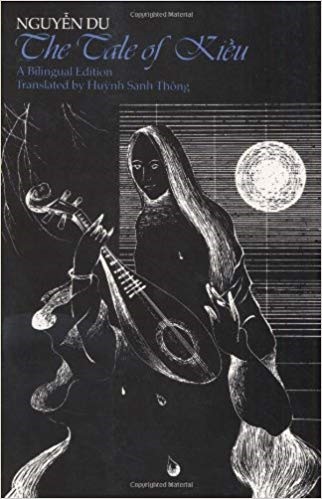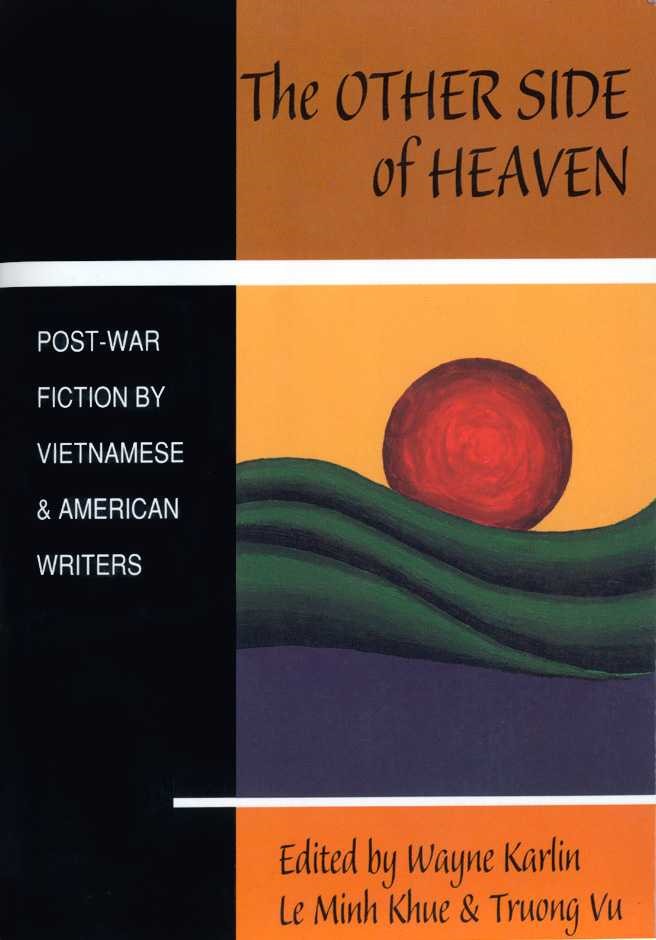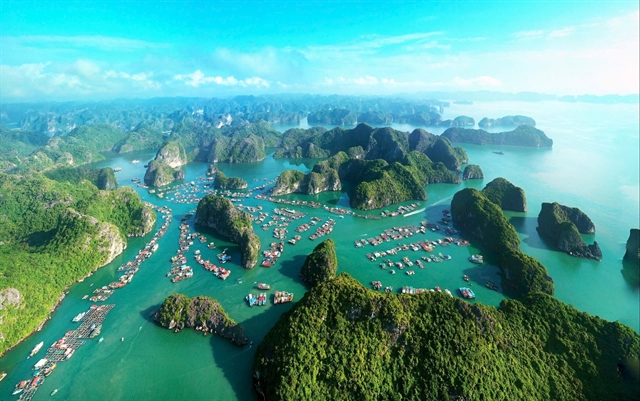 Features
Features

If Vietnamese literature wants to find a place overseas, writers need to start finding publishers. So what should we do to approach foreign publishers?
 |
| The Tale of Kiều-a bilingual edition of Nguyễn Du’s Truyện Kiều. — Photo amazon.com |
by Hồ Anh Thái
If Vietnamese literature wants to find a place overseas, writers need to start finding publishers. So what should we do to approach foreign publishers?
To answer the question, let’s first review Vietnamese books that have been translated over the past few decades.
In the early 1990s, a number of European and American publishers started becoming aware of Vietnamese literature partly thanks to foreign news agencies in Việt Nam. In addition to collections of short stories and poetry, the majority of translated books were written by 10 well-known authors.
European and American publishers only focus on authors with a reputation for producing profitable books, the so-called goose that lays the golden egg. Publishers also have an ability to seek out authors who will make them a profit. If needed, editors will travel far and wide to track down these writers and secure deals with them. Publishers and editors’ reputations grow thanks to these forays. Although there are some lucrative works to be found in existing manuscripts, publishers are usually keen to meet the writers in person. Unknown authors who submit their works are often ignored, despite their potential.
So where should authors send their manuscripts to?
Writers need an overseas literary agent: a writer, literary critic or prestigious literary professor who knows them and appreciates their work. These people act as agents and negotiate with publishers. Most Vietnamese authors of translated books in the last 30 years had their own agents, official or unofficial.
"Ways to contact publishers can sometimes take people to an unknown place," said a friend in Seattle. He is a retired lawyer and also writes during his free time. He and his friends have started a writing club. Their houses are full of books about how to write short stories and novels and get printed.
The titles of these books remind us that literature in Europe and America tends to be technical. Any job can be formulated and has a process. People do not mystify about the profession of literature. My American friend has read dozens of such books, but the way to approach a publishing house is still a mystery. The books have taught him almost everything, but he still had to ask me how to approach a publishing house?
In the early 1990s, news about the prosperity of Vietnamese literature was found in The New York Times, Time, Newsweek, International Herald Tribune, Far Eastern Economic Review ... which led some publishers to look for Vietnamese authors. More than 10 Vietnamese authors were sought out. For the publishers that had my books printed, I used to work as a "literary representative" by introducing them to other authors. We summarised the content of each novel in 500-700 words, and how Vietnamese readers welcomed the book. In this way, more works were translated. We did the same way with Tình Yêu Sau Chiến Tranh (Love After War) by summarising the content of nearly 80 short stories. The publisher then picked 50 stories by 50 authors, hired translators and editors and eventually the book was published and selected by the San Francisco Chronicle as one of the 100 best books of the year.
Having said that, most foreign publishers do not think Vietnamese literature is a gold mine. Some books have been successful in prestigious newspapers and welcomed by lecturers and graduate students who have been doing the Vietnamese studies.
Vietnamese books have been recently published by small publishers. In the United States, universities have printed from 1,000 to 2,000 copies of a number of Vietnamese books. Some non-profit publishers have printed about 5,000 copies for the first time. The books are available in the federal book system and on amazon.com. The royalties paid by this type of publisher are not high, but if the books sell out, they will be reprinted annually and the royalties will still be paid regularly to the author, even after the first edition. The number of printed books depends on a survey of purchasing capacity before publication. Usually, a publisher will not publish a book if the purchasing capacity is less than 5,000 copies.
 |
| Tình yêu sau chiến tranh (Love after War)—a collection of 50 short stories which have been selected by San Francisco Chronicle as one of 100 best in 2003. — Photo courtesy of the writer |
 |
| The cover of the book Phía bên kia góc trời (The Other Side of Heaven. — Photo courtesy of the writer |
Which books have been translated for print?
Curbstone Press is a small publisher but its books are in bookstores throughout the United States and on amazon.com, and have stirred public opinion in prestigious American newspapers. In the past 20 years, this publisher has been building a series of books on Vietnamese literature called Voices from Vietnam (Những tiếng nói từ Việt Nam) and has published books including Phía bên kia góc trời (The Other Side of Heaven); Tình yêu sau chiến tranh (Love After War); Những ngôi sao, Trái đất, Dòng sông (The Stars, the Earth, the River) by Lê Minh Khuê; Sang Sông (Crossing the River) by Nguyễn Huy Thiệp; Trong Sương Hồng Hiện Ra (Behind the Red Mist) by Hồ Anh Thái, Nghĩa địa xóm Chùa (The Cemetery of Chua Village) by Đoàn Lê; Ngược dòng nước lũ (Against the Flood) by Ma Văn Kháng; Thời gian của Người (Past Continuous) by Nguyễn Khải; Gia đình bé mọn (An Insignificant Family) by Dạ Ngân; Cây thời gian (The Time Tree) by Hữu Thỉnh; and Đường xa (Distant Road) by Nguyễn Duy.
Universities also occasionally publish Vietnamese literature in English for reference: Oxford University published Ánh sáng kinh thành (The Light of the Capital), a reportage by Tam Lang, Vũ Trọng Phụng and Nguyên Hồng; the University of Michigan printed Số đỏ (Dumb luck) by Vũ Trọng Phụng; the University of Massachusetts published Thời xa vắng (A Time Far Past) by Lê Lựu, Những người đàn bà gánh nước sông (The Women Carry River Water) by Nguyễn Quang Thiều, Nỗi buồn chiến tranh (The Sorrow of War) by Bảo Ninh; the University of Washington translated Người đàn bà trên đảo (The Woman on the Island) by Hồ Anh Thái.
L’Aube publishing house in France is more interested in Vietnamese literature, has had problems with royalties for reprinting books with some Vietnamese writers: Tướng về hưu and Trái tim hổ by Nguyễn Huy Thiệp; Người vãi linh hồn by Vũ Bão; Đảo đàn bà và Tiếng thở dài qua rừng kim tước by Hồ Anh Thái; Mảnh đất lắm người nhiều ma by Nguyễn Khắc Trường and Ăn mày dĩ vãng by Chu Lai.
The Tranan publishing house in Sweden also printed a Vietnamese book set thanks to support from the Swedish International Development Cooperation Agency: Tuyển tập truyện ngắn Việt Nam, Dế mèn phiêu lưu ký by Tô Hoài; Cơn mưa cuối mùa by Lê Minh Khuê; Muối của rừng by Nguyễn Huy Thiệp; Tuyển tập truyện by Hồ Anh Thái; Khi người ta trẻ by Phan Thị Vàng Anh; Vừa nhắm mắt vừa mở cửa sổ by Nguyễn Ngọc Thuần; and a poetry collection by 12 Vietnamese poets.
In South Korea a few Vietnamese books have been translated but mostly from English, but recently some have been translated directly from Vietnamese into Korean. One of the most recently translated books is Áo trắng by Nguyễn Văn Bổng. In the past several years, more books have been translated into Korean such as Tuyển tập truyện ngắn Việt Nam and Nỗi buồn chiến tranh by Bảo Ninh; Bi kịch nhỏ by Lê Minh Khuê; Người đàn bà trên đảo and Cõi người rung chuông tận thế by Hồ Anh Thái; and Cánh đồng bất tận by Nguyễn Ngọc Tư.
In addition, in others countries, some works are also quite popular such as Thơ Hồ Xuân Hương translated by John Balaban (Spring Essence: The Poetry of Hồ Xuân Hương); Truyện Kiều (The Kim Van Kieu of Nguyen Du) a new translation by Vladislav Zhukov, not focusing on meaning but on an ancient poetry style; Đêm qua tôi mơ thấy hòa bình, a diary by Đặng Thùy Trâm.
Collected by Quang Toản




